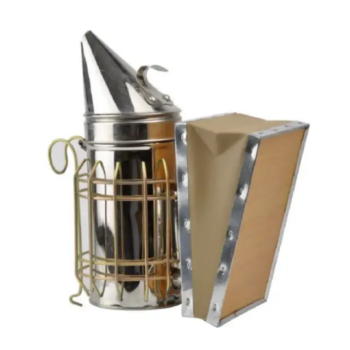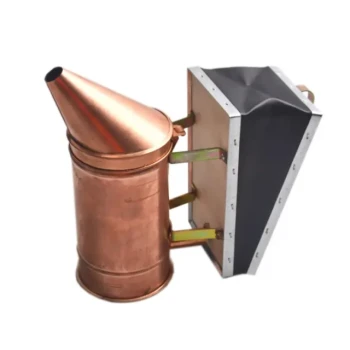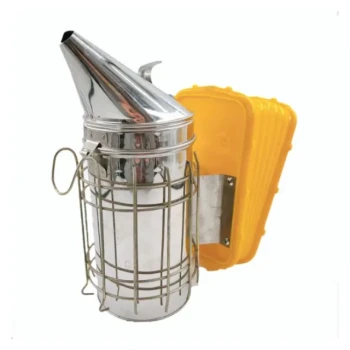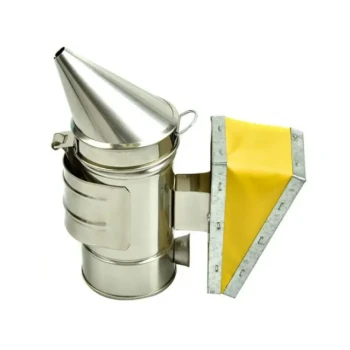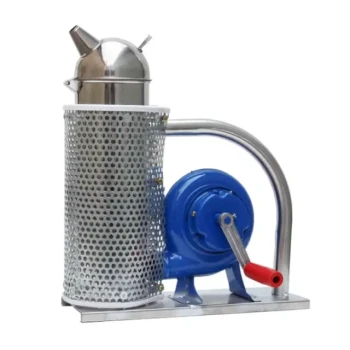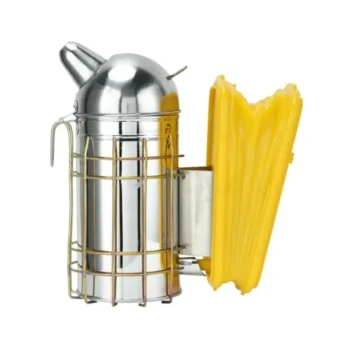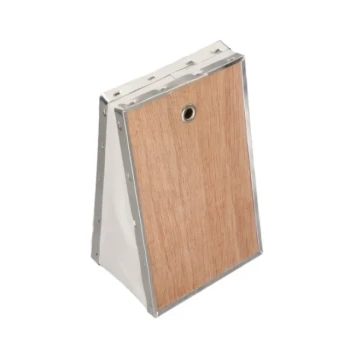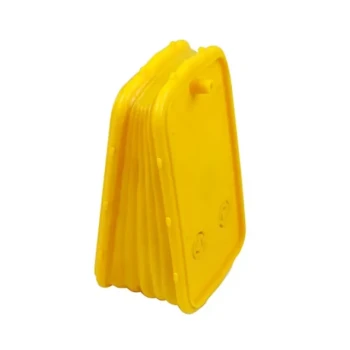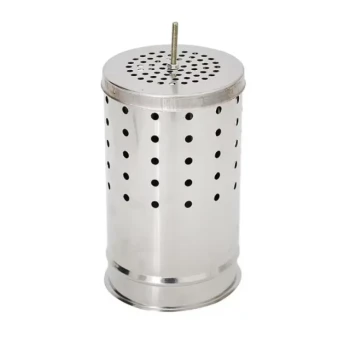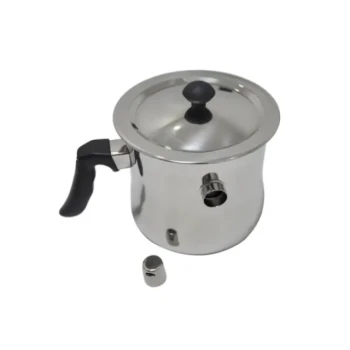The best fuel for a bee smoker is not a single material, but rather any natural, untreated substance that burns slowly and produces a large volume of cool, white smoke. Top contenders among experienced beekeepers include dried pine needles, untreated burlap, compressed cotton fibers, and certain types of wood shavings.
The goal is not simply to create fire, but to generate a specific kind of smoke. The ideal fuel smolders consistently, producing a thick, cool smoke that calms bees without harming them or overheating the smoker.
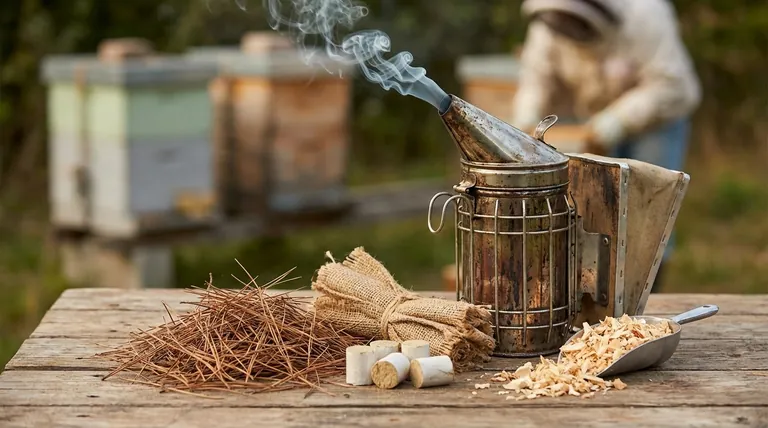
The Principle of Good Smoker Fuel
Before choosing a material, it's critical to understand what you're trying to achieve. The smoke from a bee smoker masks the alarm pheromones bees release, preventing a colony-wide defense response and making inspections safer.
Creating Cool, White Smoke
Hot, black, or thin smoke can agitate bees rather than calm them. The best fuels are those that smolder slowly instead of burning with an open flame, which ensures the smoke produced is dense and cool to the touch just a few inches from the nozzle.
Ensuring a Long, Consistent Burn
A successful hive inspection requires your full attention. A fuel that burns out quickly will force you to stop and relight the smoker, creating unnecessary disruption. A good fuel should smolder reliably for the duration of your work.
Avoiding Harmful Contaminants
You must only use all-natural, chemical-free materials. Burning plastics, treated wood, or synthetic fabrics can release toxins that are harmful to your bees, your equipment, and yourself.
Evaluating Common Smoker Fuels
Most beekeepers use materials that are readily available to them. Each has its own characteristics for lighting, burn time, and smoke quality.
Pine Needles and Wood Shavings
Dried pine needles are a classic, widely used fuel. They light easily, smolder well, and produce a pleasant-smelling, effective smoke. Similarly, untreated wood shavings or small chips work well, though they may require a starter.
Burlap and Cotton Fibers
Strips of burlap from an untreated sack or fibers from commercial cotton smoker fuel are excellent choices. They are easy to light and produce a cool, dense smoke for a very long time. Old, clean cotton clothing (100% cotton only) can also be used.
Dried Plant Matter
Many forms of dry, scentless organic matter work perfectly. Dried leaves, punky wood, or even dried herbs can be effective fuels. The key is ensuring they are completely dry to smolder properly.
Paper and Cardboard
Untreated cardboard (with tape and labels removed) and paper are best used as starters, not primary fuel. While they light very easily, they burn too hot and too fast, producing less effective smoke and requiring constant attention.
Understanding the Trade-offs and Pitfalls
Choosing the wrong fuel or using it improperly can be ineffective or even dangerous. Awareness of the potential downsides is key to a calm and safe apiary experience.
The Risk of Treated Materials
This is the most critical pitfall to avoid. Never use burlap sacks that may have contained treated seeds or pesticides. Do not use pressure-treated wood, particle board, or any wood with paint or varnish, as these release toxic fumes when burned.
Burn Temperature and Speed
A common mistake is packing the smoker too loosely or using a fuel that burns too quickly. This creates a hot fire instead of a slow smolder. Always pack your primary fuel down firmly on top of your starter material.
Moisture Content
Fuel must be completely dry. Damp material will be difficult to light and keep smoldering, producing weak, inconsistent smoke. It's wise to collect and store your preferred fuel in a dry place ahead of time.
Making the Right Choice for Your Apiary
Your choice of fuel will ultimately depend on your priorities and what natural materials are easily accessible in your area.
- If your primary focus is a long, consistent burn: Choose compressed cotton fibers or tightly packed, untreated burlap.
- If your primary focus is cost and availability: Use dried pine needles, fallen leaves, or punky wood gathered from your property.
- If your primary focus is easy lighting: Always start with a small piece of cardboard or paper, then add your slower-burning primary fuel on top once the starter is lit.
Ultimately, the best smoker fuel is natural, accessible, and provides consistent, cool smoke to keep both you and your bees calm.
Summary Table:
| Fuel Type | Key Characteristics | Best For |
|---|---|---|
| Pine Needles / Wood Shavings | Easy to light, pleasant smell, good smolder | Cost-effectiveness & availability |
| Burlap / Cotton Fibers | Long, consistent burn, cool dense smoke | Long hive inspections |
| Dried Plant Matter | Effective if completely dry, scentless | Using readily available materials |
| Paper / Cardboard | Lights easily, burns hot and fast | Use as a starter only |
Equip your apiary for success with HONESTBEE.
Choosing the right smoker fuel is just one part of effective beekeeping. For commercial apiaries and equipment distributors, having a reliable wholesale partner for high-quality, durable supplies is essential for maintaining healthy colonies and a productive operation.
HONESTBEE supplies professional-grade beekeeping equipment and supplies through our wholesale-focused operations. We help you:
- Maximize Efficiency: Spend less time sourcing and more time managing your hives.
- Ensure Quality: Use equipment built to last, season after season.
- Scale Your Business: Get the consistent supply you need to grow.
Ready to streamline your supply chain? Contact our wholesale team today to discuss your needs and get a quote.
Visual Guide
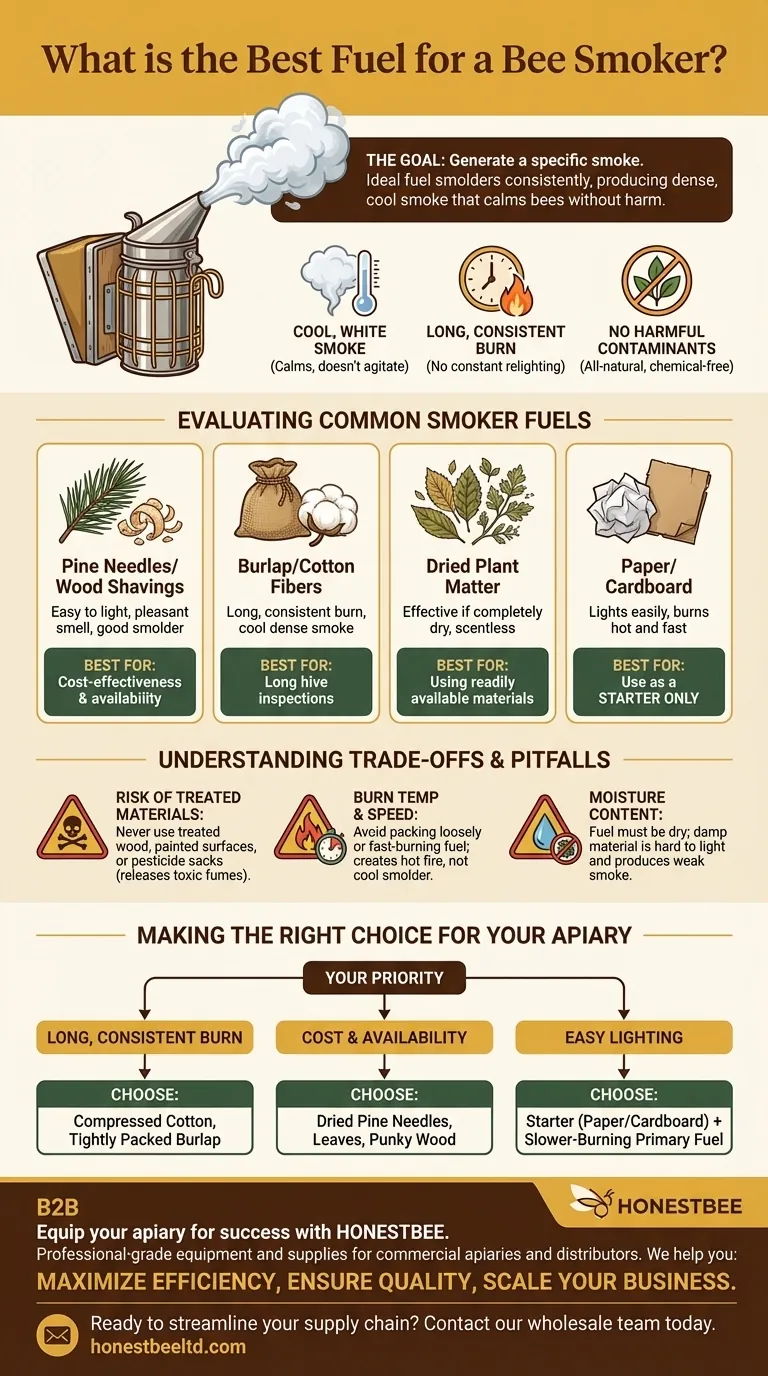
Related Products
- 54-Piece Smoker Fuel Pellets for Beekeeping Beehive Smoker Fuel
- Stainless Steel Honey Bee Smoker Hive and Honeycomb Smoker for Beekeeping
- Economy Galvanized Beekeeping Honey Bee Smoker for Wholesale
- Premium Traditional Copper Bee Smoker with Bellows
- European Stainless Steel Bee Smoker for Honey Bee Hive
People Also Ask
- What is the importance of fuel in a bee smoker? Ensure Cool, Calming Smoke for Your Hive
- What can I use for bee smoker fuel? Choose Safe, Natural Materials for a Calm Hive
- What is the best bee hive smoker fuel? Choose Natural, Slow-Burning Fuel for Calm Bees
- What is best to burn in a bee smoker? Master the Layered Fuel Technique for Calm Hives
- What is used in a bee smoker? Master the Best Fuels for Calm, Healthy Hives

